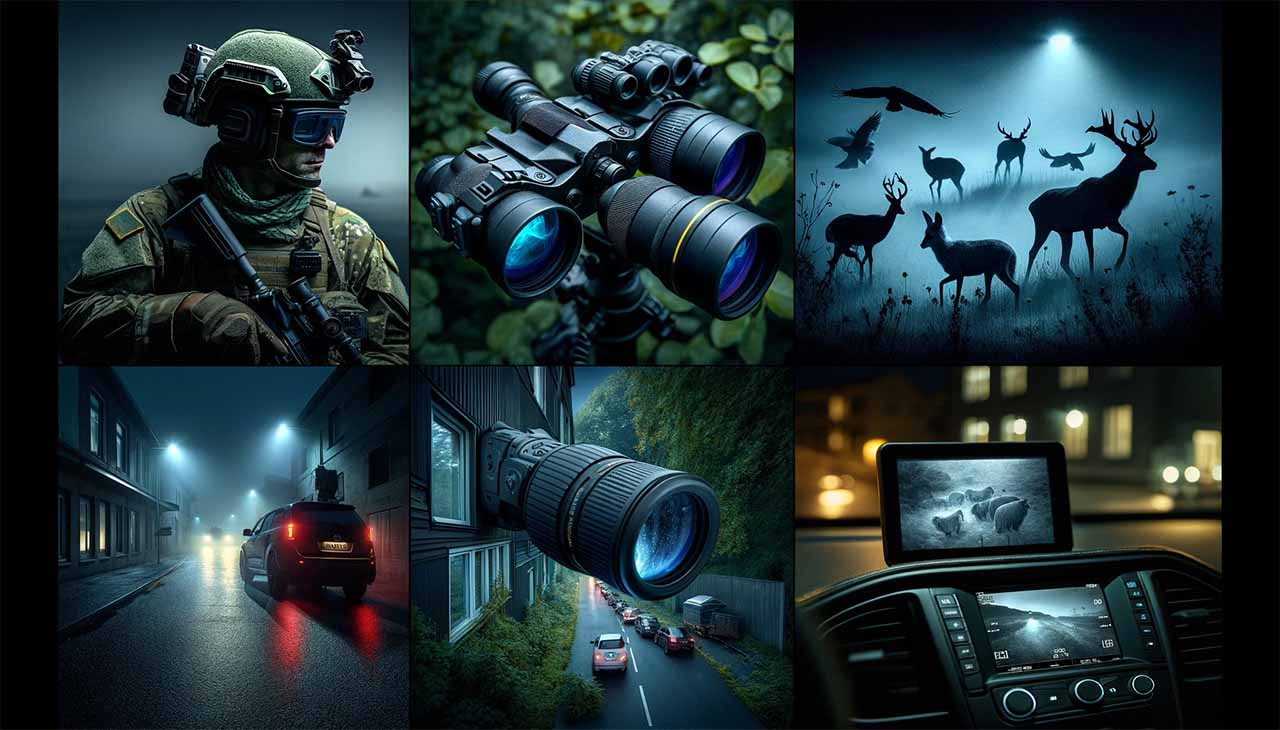Over the past few decades, the field of night vision optics has undergone significant transformation, revolutionizing various sectors from military and law enforcement to wildlife observation and outdoor recreational activities. These advancements have not only expanded our ability to perceive the world in low-light conditions, but also deepened our understanding of optical science and technology. This document explores the evolution, current state, and future potential of night vision optics, shedding light on the unseen and paving the way for exciting new developments.
Development of night vision technology
First Generation Night Vision
The initial advent of night vision technology, known as the first generation, emerged during the Vietnam War. These devices relied on ambient light—primarily from the moon and stars—to amplify the available light to make objects visible in the dark. Despite their pioneering status, first-generation devices had several limitations, including a short range and a blurry, somewhat distorted image.
Second Generation Night Vision
Advancements in technology led to second-generation night vision devices, which featured a micro-channel plate for additional light amplification. This substantially improved image quality and resolution, enabling users to see clearer and farther, even in very low light.
Third Generation Night Vision
The third generation of night vision technology introduced the use of gallium arsenide for the photocathode, a compound that significantly enhanced photocathode sensitivity. As a result, third-generation devices provided even higher image resolution and brightness, along with better performance in extremely low-light environments.
Fourth Generation Night Vision
The most recent, fourth-generation devices have moved beyond the traditional image-intensifier tube technology. These “filmless and gated” systems have an auto-gating feature and use advanced materials for the photocathode, offering superior performance in dynamic lighting conditions and further improvements in image resolution and range.
Future Advancements
Looking ahead, the future of night vision technology promises to deliver even greater advancements. These may include hybrid systems combining thermal and infrared technology, integration with augmented reality (AR), and further improvements in size, weight, power, and cost aspects. As the quest to illuminate the dark continues, each advancement brings us a step closer to redefining visibility limitations.
Working principles of night vision optics
Image Intensification
The principle of image intensification, often employed in night vision technology, revolves around amplifying existing light in the environment, such as starlight or moonlight, to a level that the human eye can detect. This process involves the conversion of photons into electrons via a photocathode. These electrons are then amplified by a micro-channel plate and converted back into visible light by a phosphor screen. The result is an image that can be discerned in the dark, but tinted green due to the phosphor screen.
Thermal Imaging
Thermal imaging, or thermography, is another principle used in night vision optics. Unlike image intensification, thermal imaging does not rely on ambient light. Instead, it detects the heat energy or infrared radiation emitted by objects. This radiation is captured and processed to form a thermogram, which is then translated into a visible image. The different temperature levels are represented by varying shades of color or grayscale, allowing us to ‘see’ the heat signatures of objects and living beings, even in pitch darkness or obscured conditions.
Digital Night Vision
Digital night vision represents a newer advancement in night vision technology. It works by collecting light through an objective lens, after which an image sensor converts this light into an electronic signal. This signal is then processed and displayed on an LCD or other electronic viewfinder. Digital night vision devices can operate in both day and night conditions, and the images can be easily recorded or transmitted. Moreover, digital systems offer a significant advantage in terms of cost-effectiveness and durability compared to traditional night vision systems.
Applications of night vision optics
Military and Defense
Night vision optics have a crucial role in modern military and defense operations. They allow personnel to carry out a wide range of activities under the cover of darkness, such as surveillance, reconnaissance, target acquisition, and navigation. The ability to operate at night or in low-light conditions provides a significant tactical advantage, enhancing mission success and personnel safety.
Law Enforcement
In law enforcement, night vision technology is invaluable for surveillance operations, suspect tracking, and safe navigation during nighttime operations. It assists in maintaining public safety and conducting effective investigations by enabling officers to operate effectively in low-visibility scenarios.
Wildlife Observation
Night vision optics have revolutionized wildlife observation and research, providing the ability to study nocturnal animals in their natural habitats with minimal disturbance. This technology facilitates direct observation of behaviors and patterns that would otherwise remain unseen, yielding valuable data for conservation efforts.
Navigation and Surveillance
Night vision technology is extensively used in navigation and surveillance systems. In maritime and aviation contexts, it enhances safety and efficiency by facilitating navigation in low-light conditions. In surveillance, night vision cameras and devices are used to monitor premises and detect suspicious activities during nighttime, contributing to security and safety.
Outdoor Activities and Hobbies
For outdoor enthusiasts, night vision optics enhance the experience of camping, stargazing, night fishing, caving, and other nighttime hobbies. They provide the ability to navigate safely, observe wildlife, and fully enjoy the beauty of nature after dark. The availability of affordable and user-friendly night vision devices has made it a popular tool among hobbyists and outdoor adventurers.
Recent advances in night vision optics
Enhanced Image Quality
The ongoing evolution in night vision technology has led to significant improvements in image quality. This is achieved through the use of advanced materials for photocathodes and the development of more efficient image intensifier tubes, resulting in brighter, sharper and clearer images, even in extremely low-light conditions.
Extended Range Capabilities
Progress in optics and image intensification technologies has also extended the operational range of night vision devices. Modern systems can now provide clear and detailed images at significantly greater distances, increasing their utility in activities such as surveillance, reconnaissance, and wildlife observation.
Compact and Lightweight Designs
Today’s night vision devices are becoming increasingly compact and lightweight, without compromising on performance. This is primarily due to advancements in materials and miniaturization of electronic components. Such improvements have made these devices more portable and comfortable to use, broadening their application in various fields.
Integration with Other Technologies (AR, AI)
Night vision technology is increasingly being integrated with other emerging technologies such as Augmented Reality (AR) and Artificial Intelligence (AI). AR integration enables overlay of data and images on the real-world view, while AI capabilities can facilitate object recognition, threat detection, and data analysis, thus providing more sophisticated and intelligent night vision systems.
Cost Reduction
Improvements in manufacturing techniques, along with the growth of digital night vision technology, have contributed to a reduction in costs. As a result, night vision devices have become more affordable, making them accessible to a wider range of users, including hobbyists and the general public. This trend is expected to continue as the technology further evolves.

